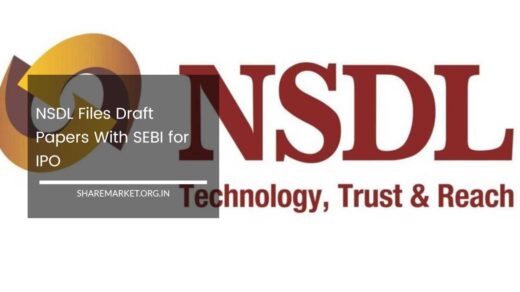Zomato vs Swiggy: Which Stock Will Deliver Better Returns for Investors?

Zomato vs Swiggy
Zomato vs Swiggy: Which Stock Will Deliver Better Returns for Investors?
The fierce rivalry between Zomato and Swiggy, India’s two dominant food delivery platforms, is now extending into the stock market. Swiggy, which was previously a privately held company, has now entered the public market with its own listing.
Until recently, Zomato was the only major player in the Indian food delivery space to have gone public, with its shares listed in July 2021.
With Swiggy now listed, investors are faced with a new question: Which stock offers better potential for returns—Zomato or Swiggy?
Zomato’s Lead in Market Segments: For Now
At present, Zomato holds a competitive advantage over Swiggy in several key segments. It leads in food delivery and has a larger customer base with 1.84 crore Monthly Transacting Users (MTUs) as of FY24, compared to Swiggy’s 1.27 crore MTUs.
Zomato also boasts a stronger presence in smaller cities and towns, a factor that could contribute to higher user engagement and long-term growth.
Additionally, Zomato has more memberships and annual transaction users, which are seen as a sign of its robust business model.
However, despite this lead in certain operational areas, analysts are cautiously optimistic about Swiggy’s future performance in the stock market.
Swiggy’s shares are expected to perform better due to its current valuation discount compared to Zomato.
The higher valuation of Zomato’s stock makes a rerating of its shares less likely, meaning that while Zomato may continue to perform better in the short term, it faces challenges in sustaining significant stock price growth in the medium to long term.
The Valuation Debate: Zomato’s High Price vs. Swiggy’s Discount
One of the main differentiators in this investment debate is the valuation of the two companies. Zomato’s stock has already been priced at a relatively high valuation, with a market capitalization that reflects its current leadership in the food delivery sector.
However, this high valuation limits the scope for significant future gains, as investors are likely to be more cautious about its growth potential at such elevated price levels.
On the other hand, Swiggy’s market debut comes with a relatively lower valuation, which suggests that there is more room for upside potential.
This valuation gap is one of the reasons analysts believe Swiggy’s stock may offer better returns in the near future.
In essence, while Zomato may be the dominant force in food delivery today, Swiggy’s lower valuation could make it a more attractive investment opportunity in the long run.
Quick Commerce: Blinkit vs. Instamart
Another critical factor in the Zomato vs. Swiggy debate is their respective positions in the quick commerce (q-commerce) space. Swiggy’s Blinkit, which it acquired in 2022, has made impressive strides in the q-commerce segment, especially in comparison to Zomato’s Instamart.
Blinkit has seen faster growth, both in terms of transacting users and average order value. As of FY23, Blinkit had surpassed Instamart in multiple key metrics, including monthly transacting users, dark store counts, and gross order value per dark store.
This gives Blinkit a significant operational edge, which could translate into improved profitability and market share as the quick commerce market expands.
Instamart, meanwhile, continues to operate at a loss, even at the contribution margin level, and faces a much steeper uphill battle to compete with Blinkit. Blinkit’s superior operational efficiency, coupled with its higher growth trajectory, suggests that Swiggy’s q-commerce business is on a much stronger footing compared to Zomato’s Instamart.
Swiggy’s Strategy: A Focus on MTU Growth
Swiggy is aggressively working on increasing its Monthly Transacting Users (MTUs), which is key to its strategy for scaling up its food delivery and quick commerce business.
Aditya Suresh, Head of Equity Research at Macquarie Capital, mentions that Swiggy is about 4 to 6 quarters behind Zomato in terms of market share in both food delivery and q-commerce.
While this lag is notable, Swiggy’s strategic push to expand its user base could help it catch up quickly, especially given the larger runway for growth in smaller cities and towns.
Short-Term vs. Long-Term: What Investors Should Consider
In the short term, Zomato may still outperform Swiggy on the operational front, given its established leadership in food delivery and its greater user base.
However, its high valuation could limit the upside potential of its stock price. Swiggy, while trailing Zomato in terms of market share, is likely to benefit from a lower valuation and faster growth in key areas like q-commerce and MTU expansion.
Final Remarks: Swiggy or Zomato—Which Stock is the Better Investment?
Investors looking for immediate returns might find Zomato’s strong performance in food delivery appealing, but its high valuation could mean limited future growth potential.
On the other hand, Swiggy, despite being behind Zomato in certain areas, offers better long-term upside potential, especially considering its lower market valuation and fast-growing quick commerce business.
Swiggy’s strong position in the q-commerce space, coupled with Blinkit’s leading market share, gives it an edge in this rapidly expanding segment.
In conclusion, for those with a long-term investment horizon, Swiggy may present a more attractive opportunity due to its lower valuation, faster growth potential in key segments like quick commerce, and its broader market opportunity in India’s smaller cities.
Zomato, while still a strong player, may offer more limited upside in the stock market, making it a less compelling investment at its current valuation.

















